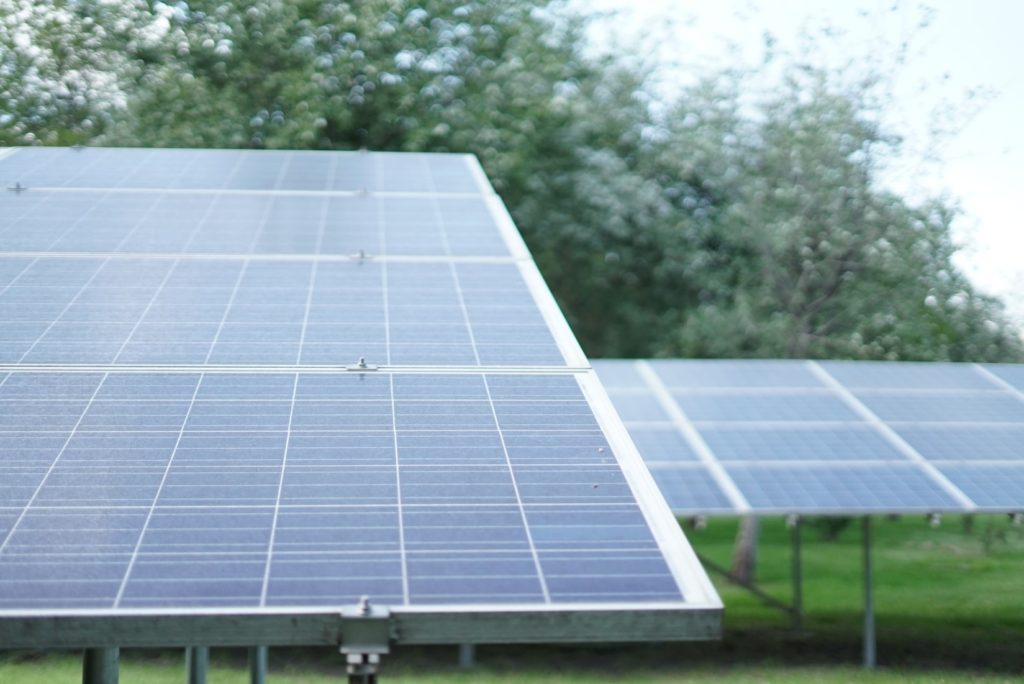
The solar tax credit allows you to deduct around 30 percent of the total costs for the installation of a solar energy system on the roof of your home. One of the better aspects of this tax credit is that there’s no limit to the value of the solar energy system, which means that you can claim this tax credit no matter the price. If you qualify for the solar tax credit, it can be very beneficial for reducing the amount of taxes you need to pay. The average homeowner can save anywhere from $5,000-$9,000 by taking advantage of this tax credit.
If you happen to purchase solar panels for your roof in 2019, you can claim the solar tax credit on the taxes that you file in 2020. However, there are some qualification requirements that you should be aware of before you purchase solar panels. Since this tax credit can take thousands off the final cost for the panels, you should know whether or not you qualify. The following will offer a detailed guide to how the federal solar tax credit works and what benefits it can provide to you.
The History of Solar Tax Credit

The solar tax credit was first established in 2005 via the Energy Policy Act. At that time, this policy was known as the Solar Investment Tax Credit and was set to fully expire in 2007. The Energy Policy Act was put into motion to effectively combat the growing energy problems throughout the country. There were a variety of provisions in the bill that altered the energy policy of the country and allowed for loan guarantees and tax incentives pertaining to the production of different types of energy. Along with providing tax incentives for solar panels, the Energy Policy Act also allowed homeowners to obtain tax breaks for making other energy-efficient improvements to their homes.
Because of the rising popularity of solar panels and the solar tax credit itself, several extensions were made over the next decade that pushed the expiration date of this tax credit from 2007 to 2016. The United States Congress then passed a spending bill at the end of 2015 that added another five years to the tax credit, which means that it’s currently set to expire at the end of 2021. While there’s certainly a strong possibility that the Energy Policy Act will be extended once more before the expiration date, you should consider obtaining solar panels for the roof of your home before the end of 2021 if you want the tax credit. If an extension doesn’t occur, only commercial businesses will be able to obtain a small credit for the installation of solar panels.
What is the Federal Solar Tax Credit?

The federal solar tax credit allows you to claim 30 percent of the total costs of a solar system for your home, which can be claimed on your federal tax return. If you happen to spend $20,000 on a solar system for your home in 2019, this tax credit would reduce the amount of taxes you would need to pay on your federal tax return by $6,000, which is a substantial sum of money. The only downside to this tax credit is that you will need to wait to use it on the return that you file the year after the panels have been installed. If you install solar panels on your home in February of next year, you would need to wait until 2021 to claim the credit.
The 30 percent tax credit doesn’t just apply to the installation of solar panels. Instead, it applies to the total project costs, which include such expenses as the permitting and equipment alongside the installation. Tax credits are fantastic when compared to tax deductions. While deductions reduce the amount of your income that can be taxed, credits directly reduce the amount of taxes you pay for the year. A $1 credit equals a $1 reduction in how much taxes you pay.
Before you purchase a solar system, it’s important to note that this tax credit is only available to homeowners who own the solar system in question. If you lease the system, you will be unable to claim the credit. The main benefit associated with the federal solar tax credit is that you will be able to save money on your taxes, which effectively reduces the amount that you pay for solar panels. If you have the initial funds needed to invest in solar panels, there are no downsides to claiming the tax credit.
How Much Money Can I Save From the Federal Solar Tax Credit?

If you install solar panels on the roof of your home before the end of 2019, you will be able to save 30 percent on the total costs of the solar system that you purchase. These expenses include installation costs, the costs of any permits you need to obtain, and the actual solar system equipment costs. As such, the money that you save all depends on what you pay for the solar panels. If you pay $10,000 for everything related to the panels, your tax credit would be $3,000, which you will be able to claim on your tax return the year after the installation has occurred.
However, it’s important to understand that the amount that you can save with the solar tax credit is set to reduce for each year until it expires at the end of 2021. If you install a solar system on the roof of your home in 2020, you can save 26 percent of the total costs for the solar system. In 2021, these savings are reduced to 22 percent. After that year, only commercial businesses will be able to claim a tax credit for the installation of a solar system. However, this credit has been extended several times during its 14 years of existence and may be extended again towards the end of 2021.
To understand just how beneficial this tax credit can be, you should know that the total costs for solar panels have fallen by around 99 percent over the past 32 years, which means that you can save a significant amount of money on a system that already costs much less than it did a decade ago. As such, it shouldn’t take long for you to make a return on your initial investment. If you happen to reduce your standard electricity usage completely, your monthly energy bills will be nonexistent, which means that you would pay off the system in next to no time after obtaining the solar tax credit. Solar energy is able to power your home 24/7 as long as you have a storage unit or battery installed, which will help you get rid of your monthly energy bill. In 2019, the benefits of switching to solar panels are many, which is why you should heavily consider switching to solar energy.
Do I Qualify for the Federal Solar Tax Credit?

Among the most notable aspects of the solar tax credit is that qualification for the credit is relatively straightforward. If you own your solar system, you will automatically qualify for the tax credit in question. You should also know that the tax credit can be rolled over to the next tax year if you don’t have enough tax liability for the current year.
If you owe $5,000 in taxes but have a tax credit worth $6,000, the remaining $1,000 in credits could be used on the tax return that you file next year. When you’re considering all of the solar options available to you, make sure that you avoid signing a PPA or lease with the installer of the solar panels. You need to fully own the panels if you want to qualify for the solar tax credit.
How Do I Claim the Solar Tax Credit?
In order to claim the solar tax credit, you need to keep all of your receipts related to the system, which include installation receipts and permit receipts. The more receipts you have, the higher your tax credit will be. Once your system has been installed and all of your receipts have been saved, you can claim your credit. The residential energy credit can only be claimed with IRS Form 5695, which comes with easy-to-understand instructions compared to most other tax forms.
This form will need to be filed with the standard 1040 individual tax return. Once you have filled out the 5695 form, you can place the final number of your tax credits onto the 1040 form. The amount of tax credits on Line 15 of Form 5695 should be input directly onto Line 53 of the Section 3 portion of Form 1040. When you’re finished filling out both forms, all that’s left is to send them to the IRS. To avoid making any mistakes, it’s recommended that you speak with a tax specialist or CPA who can handle your taxes for you. The many expenses that you are allowed to claim with this tax credit include:
- Freight shipping costs
- Solar equipment
- Engineer and electrician fees
- Fees for a professional installer
- Solar consulting fees
- Tools that you purchased or rented for the installation of your solar panels
- Any bolts, wiring, nails, or screws that you purchased
- Permitting fees and service costs
- Other equipment that you rented or purchased such as scaffolding
Benefiting from Solar Panels & Solar Tax Credit

If you are interested in adding solar panels to the roof of your home, you’ll immediately benefit from being able to reduce or eliminate your electricity bills and protect the environment by using a renewable energy source. While solar panels should pay for themselves after 10-20 years, you can shave off around $5,000-$9,000 from the price of these panels by making use of the federal solar tax credit. As long as you own the solar energy system that’s installed on your roof, you’ll be able to claim the tax credit.
Along with the aforementioned benefits of solar panels, these panels are advantageous for homeowners because they are able to effectively convert solar energy into electricity that you can use to power the appliances in your home. Since solar energy is by far the most abundant source of energy in the world, you should never need to worry about having electricity in the future.
Solar panels also come with very little maintenance requirements, which means that most of the costs related to the panels are the upfront costs of buying the panels and having the system installed. If you are thinking about moving to a home that would be able to take advantage of solar energy sources to save money and power your home in an environmentally friendly fashion, contact our real estate experts at Nicki & Karen today.